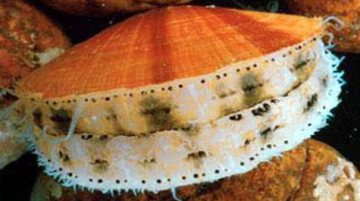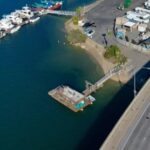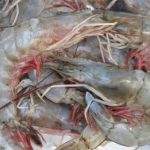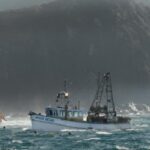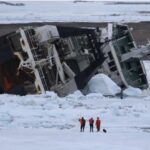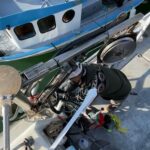Tag Archives: scallop fishery
SMAST’s Kevin Stokesbury: On scallops, community collaboration, and a lifelong love of the ocean
 Growing up on the Bay of Fundy in Nova Scotia, Kevin Stokesbury spent as much time as possible swimming, searching for sand shrimp, and soaking up the sun with his siblings. Now as dean of the School for Marine Science and Technology (SMAST) at UMass Dartmouth, he’s finding practical applications for his passion with the sea. Stokesbury has played an integral role in revitalizing the scallop industry in New Bedford, inventing a drop camera in 1999 that snapped photos of scallops living on the seafloor, giving scientists and fishermen much more precise estimates of scallop numbers than previously available. The location map and information accompanying the photographs have proved vital. Stokesbury’s invention has greatly boosted the local economy. Before the drop camera, scallop boats brought in an annual harvest valued around $89 million. In 2021, it was $670 million, according to a NOAA commercial landings report. Video, Photos, >click to read< 17:41
Growing up on the Bay of Fundy in Nova Scotia, Kevin Stokesbury spent as much time as possible swimming, searching for sand shrimp, and soaking up the sun with his siblings. Now as dean of the School for Marine Science and Technology (SMAST) at UMass Dartmouth, he’s finding practical applications for his passion with the sea. Stokesbury has played an integral role in revitalizing the scallop industry in New Bedford, inventing a drop camera in 1999 that snapped photos of scallops living on the seafloor, giving scientists and fishermen much more precise estimates of scallop numbers than previously available. The location map and information accompanying the photographs have proved vital. Stokesbury’s invention has greatly boosted the local economy. Before the drop camera, scallop boats brought in an annual harvest valued around $89 million. In 2021, it was $670 million, according to a NOAA commercial landings report. Video, Photos, >click to read< 17:41
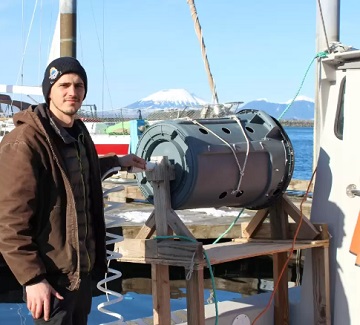
Sitka scallop fishery a test of one entrepreneur’s ingenuity and skill
On days when Evan O’Brien isn’t diving for pink swimming scallops or harvesting gooseneck barnacles off steep rock faces at low tide you can find him in a slip at Thomsen Harbor, working on the new diving boat he purchased from Oxnard, California earlier this year. The F/V Sinbad was purchased by O’Brien for his company, Merrick Shellfish, from a sea urchin diver, so the boat is equipped with everything he needs for a dive. So what does a typical dive for these scallops look like? “You’ll swim up to a boulder or something that’s covered with them,” O’Brien explains. “And in the winter like this, maybe, I don’t know, 10 to 20% of them will take off, start swimming,” he continues. “I just leave those, and I harvest the ones that stay, because they’re kind of dormant and they’re sort of hibernating, so they’re easier to harvest.” Video, >click to read< 16:45
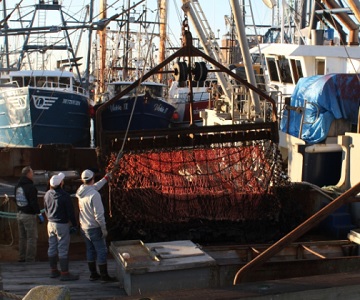
Regulators see hard years ahead for the scallop fishery, New Bedford’s cash cow
Scientists report that young scallops off the eastern seaboard have been struggling to grow to maturity for nearly a decade now, constraining one of the nation’s most lucrative fisheries to its lowest biomass in more than 20 years. In a presentation before the New England Fishery Management Council on Wednesday, the council’s scallop analyst Jonathon Peros projected that the latest regulations adopted by the council will cap next year’s scallop harvest at 25 million pounds, a steep drop from a record harvest of 61 million pounds recorded just four years earlier. >click to read< 09:45
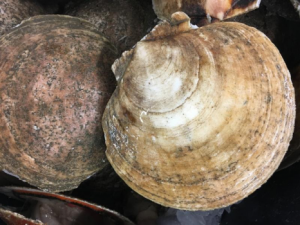
New rules for scallop fishery scheduled to take effect April 1 in Northern Gulf of Maine
A Feb. 17 presentation on upcoming changes to Northern Gulf of Maine scallop fishery management drew a number of New England fishermen to listen to scallop leaders from the New England Fishery Management Council and NOAA. The biggest change for scallop fishermen is that vessels fishing in Northern Gulf of Maine waters will be required to take industry-funded scallop observers on board when selected to do so. Additionally, a portion of Stellwagen Bank in Massachusetts Bay will open for scallop fishing. >click to read< 10:14
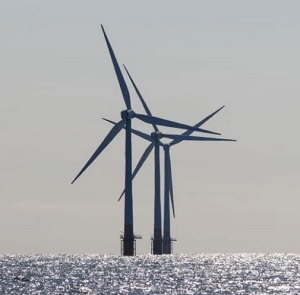
Scallop fishermen and industry advocates call for changes to proposed NY Bight offshore wind farm area’s
In an online call with Bureau of Ocean Energy Management (BOEM) officials, industry representatives highlighted the need for a buffer zone to protect the most valuable scallop area in the Mid-Atlantic and expressed concern over environmental and fisheries impacts of offshore wind development generally. Proposed lease areas need to be thoroughly re-evaluated to reduce impacts to scallops and scallop fishermen, who operate in the most valuable federally managed fishery. >click to read< 13:36

Queensland’s scallop industry in doubt
Fisheries Queensland says recent figures show scallop numbers are in serious decline with the biomass, or the amount that can be fished, dropping to 12 per cent of 1977 levels. But Queensland Seafood Industry Association treasurer and scallop fisherman Kevin Reibel said completely closing the fishery would be devastating to south-east Queensland communities. >click to read< 22:00

Success of NY Offshore Wind Industry Depends on Collaboration with Scallop Fishery – Who’s leaving because of Displacement?!
Governor Cuomo’s 2018 Offshore Wind Master Plan outlines steps for offshore wind development until 2030. A first-of-its-kind document in the 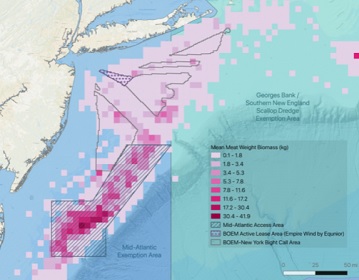 United States, the plan delineated a study area known as the New York Bight Call Area.. The NY-NJ Bight Call Area is valuable to the Atlantic sea scallop fishery, the largest wild scallop fishery in the world. In 2016, the scallop industry generated $486 million in landings revenue. As a point of comparison, the American lobster was the top species fished in 2016, with $667 million in landings revenue.,, fishermen are concerned that the potential displacement of fishing activity from the wind farms could increase competition for the same scallop resources in the NY-NJ Bight and drive smaller vessels out of business. >click to read< 16:45
United States, the plan delineated a study area known as the New York Bight Call Area.. The NY-NJ Bight Call Area is valuable to the Atlantic sea scallop fishery, the largest wild scallop fishery in the world. In 2016, the scallop industry generated $486 million in landings revenue. As a point of comparison, the American lobster was the top species fished in 2016, with $667 million in landings revenue.,, fishermen are concerned that the potential displacement of fishing activity from the wind farms could increase competition for the same scallop resources in the NY-NJ Bight and drive smaller vessels out of business. >click to read< 16:45
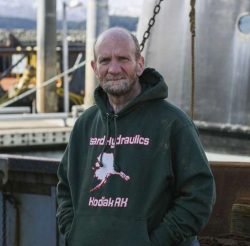
Kodiak man dives into scallop fishery – has been fishing scallops out of Kodiak for 40 years
With regards to scallops, Tom Minio could accurately be described as erudite. On Thursday afternoon, Minio sat in the galley of his vessel, the Provider, explaining what makes the best product, while the metallic screeches of boat work drifted in from other parts of the vessel. “The market really loves the big stuff, which I don’t understand. I don’t like eating big scallops,” he said. “It’s just like old halibut, you know: the bigger they are, the older they are and the tougher they are.” Minio has been fishing scallops out of Kodiak for 40 years. He started when he was 18 years old and doesn’t know anyone who’s been doing it longer than he has. With a small number of limited entry permits available and the quota around Kodiak decreasing, other fishermen and vessels dropped out of the fishery — but Minio held on. During the most recent season, the Provider was the only vessel fishing scallops in the Kodiak fishery. >click to read<14:01

Setbacks for Ramea’s scallop fishery
Labrador Gem Seafoods owner Danny Dumaresque is anxious about having a decent season at Ramea’s scallop plant this year. A few glitches with a new on board tank holding system and issues getting independent fish harvesters to provide the raw resource resulted in plant employees working less weeks than they are accustomed to. Approximately three weeks ago, a new refrigerated, recirculating sea water system that enables a vessel to carry live sea scallops in temperature controlled water was slightly too high, effectively parboiling the scallops that must arrive to the plant alive in order to be properly processed into the line of products the company produces. The equivalent of a metric ton of finished product had to be discarded. >click to read<13:25
Planned license lottery draws fire at scallop hearing
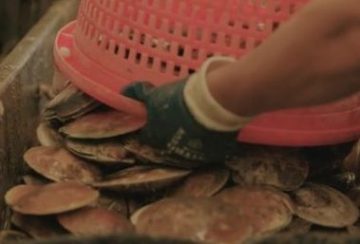 One look at the audience at a Department of Marine Resources hearing on new scallop fishing rules last week made it clear that the fishery is getting older. By a good margin, most of the three dozen or so scallop harvesters at Ellsworth City Hall last Wednesday evening had faces lined by years on the water and beards long gone gray.,, In 2009, the Legislature passed a moratorium on new scallop licenses. It also ordered DMR to come up with a lottery system to allow new entrants into a fishery that Brooklin scallop dragger David Tarr describes as a “club. click here to read the story 12:12
One look at the audience at a Department of Marine Resources hearing on new scallop fishing rules last week made it clear that the fishery is getting older. By a good margin, most of the three dozen or so scallop harvesters at Ellsworth City Hall last Wednesday evening had faces lined by years on the water and beards long gone gray.,, In 2009, the Legislature passed a moratorium on new scallop licenses. It also ordered DMR to come up with a lottery system to allow new entrants into a fishery that Brooklin scallop dragger David Tarr describes as a “club. click here to read the story 12:12
“Corrupt” goings on? Fishery council decision endangers scallop stock
 Outdoor writer Bill Biswanger received a letter from Jason Colby, who is a charter-boat captain and sits on the board of directors for non-commercial fishermen here in Massachusetts about the nasty — he calls it “corrupt” — goings-on in the scallop fishery. He told me how Eddie Welch, a shellfish advisor, had written to him about the problem down on the Cape and wanted to share this with me and the readers. Here are excerpts from his letter: “A recent controversial decision to open select scallop grounds off the coast of New England to certain select fishing groups undermines sustainable scallop management, and threatens the future health of one of the region’s most valuable resources. Read the rest here 08:48
Outdoor writer Bill Biswanger received a letter from Jason Colby, who is a charter-boat captain and sits on the board of directors for non-commercial fishermen here in Massachusetts about the nasty — he calls it “corrupt” — goings-on in the scallop fishery. He told me how Eddie Welch, a shellfish advisor, had written to him about the problem down on the Cape and wanted to share this with me and the readers. Here are excerpts from his letter: “A recent controversial decision to open select scallop grounds off the coast of New England to certain select fishing groups undermines sustainable scallop management, and threatens the future health of one of the region’s most valuable resources. Read the rest here 08:48
Fulcher family-owned processor ‘may be beneficial’ in future
 Greg Fulcher hit US scallop sector headlines recently by paying $7 million to secure the fishing vessel Alaska, complete with permit, from New Bedford, Massachusetts-based Oceans Fleet Fisheries. However, he is far from the only Fulcher in the seafood business. “In the future, depending on consolidation in the sector and what happens with permits on boats, it might be beneficial to go into processing, with all of us owning one plant, with our raw materials going into it,” he suggested. Fulcher believes changes are coming to the US scallop sector, which will allow a company to stack more than one permits on a vessel. Read the rest here 16:26
Greg Fulcher hit US scallop sector headlines recently by paying $7 million to secure the fishing vessel Alaska, complete with permit, from New Bedford, Massachusetts-based Oceans Fleet Fisheries. However, he is far from the only Fulcher in the seafood business. “In the future, depending on consolidation in the sector and what happens with permits on boats, it might be beneficial to go into processing, with all of us owning one plant, with our raw materials going into it,” he suggested. Fulcher believes changes are coming to the US scallop sector, which will allow a company to stack more than one permits on a vessel. Read the rest here 16:26
NOAA out of touch with scallop grounds, Fred Crabtree, New Bedford
 NOAA is proposing more regulations on the scallop industry, to justify its existence (“Council expected to vote on scallop grounds,” April 23). The National Oceanic and Atmospheric Administration has regulated the finfish industry to almost non-existence. The draggers that are still fishing have to buy fishing time from the draggers that stay tied to the dock. The scallop fishery would also be in the same shape were it not for UMass Dartmouth. Read the rest here 08:25
NOAA is proposing more regulations on the scallop industry, to justify its existence (“Council expected to vote on scallop grounds,” April 23). The National Oceanic and Atmospheric Administration has regulated the finfish industry to almost non-existence. The draggers that are still fishing have to buy fishing time from the draggers that stay tied to the dock. The scallop fishery would also be in the same shape were it not for UMass Dartmouth. Read the rest here 08:25
Maine DMR assents to fishing season sought by Scallop Advisory Council
The state Department of Marine Resources, acceding to the wishes of the Scallop Advisory Council, has proposed that draggers and divers be allowed to fish for scallops the same number of days in 2014-15 as the previous season. <Read more here> 17:54
This is Fish Radio. I’m Laine Welch – Bristol Bay reds already 10 million over forecast, other AK fisheries updates
 Bristol Bay continues to have one million or more red salmon days and the catch total continues to climb. The sockeye take was at 27 million, already 10 million over the forecast, and all signs point to more fish on the way. Read more here 17:38
Bristol Bay continues to have one million or more red salmon days and the catch total continues to climb. The sockeye take was at 27 million, already 10 million over the forecast, and all signs point to more fish on the way. Read more here 17:38
Management Measures for Atlantic Sea Scallop Fishery Finalized Today
State of Maine shuts down more scallop fishing areas – go into effect on Monday, Feb. 25
 In the latest round of closures in Maine’s scallop fishery this winter, state officials have decided to shut down three more areas to scallop harvesting. All three of the most recent closures go into effect on Monday, Feb. 25, according to DMR officials. Read more
In the latest round of closures in Maine’s scallop fishery this winter, state officials have decided to shut down three more areas to scallop harvesting. All three of the most recent closures go into effect on Monday, Feb. 25, according to DMR officials. Read more
Fish council eyes December for ’13 limits By Richard Gaines Staff Writer GDT
The New England Fishery Management Council has set a special one-day meeting Dec. 20 to take final action on most groundfish allocations for the 2013 fishing year that begins May 1, and take near final action on Framework 48 which updates and refines Amendment 16 and its catch share maagement system. The special meeting was spun off the November council meeting set for Newport, R.I., due to the welter of issues. http://www.gloucestertimes.com/local/x1499658911/Fish-council-eyes-December-for-13-limits
Jeez Nils! It was in Wikipedia, fer Cripe Sake, AND at least we now know Where Royal Dutch Shell got their sign!
I love it when Nils Stolpe gets agitated. The last time he got his jaw tightened up was when he was invited to the Environmental Journalist Society shindig along with a bunch of Pew paid slugs that really know how to pollute the information stream with agenda driven hyperbole. Now, in his latest, he describes why he gets frustrated, and I share his concern. Once the baloney sandwich, dressed with the special green sauce is on the menu, it stays there. It never gets removed, so when one of his fellow Garden Stater’s, a self-proclaimed journalist takes his Housewife of New Jersey down to Jersey Shore for a scallop feed, ‘n Snooky says they ain’t got none, the guy decided to order the baloney sandwich, and dress it out with his own trimmings.
From Nil’s Stolpe
The New Jersey Newsroom website was formed by journalists and ex-journalists, primarily from the Newark (New Jersey) Star Ledger, with collective experience adding up to “over 1,000 years.” On their site those journalists wrote “our contributing writers, driven by passion and purpose, contribute as volunteers who believe in the cause…. NewJerseyNewsroom.com’s goal is to provide high-quality news for New Jerseyans and not just about New Jerseyans. We will do our best to gather all the stories you want, regardless of the original sources.”
Impressive sounding, isn’t it? Unfortunately, at least judging by a recent article on the scallop fishery off the East coast, the content on the site ,,,,,,,, Read More! http://fishnet-usa.com/GettingItWrong.pdf
http://www.newjerseynewsroom.com/science-updates/fewer-qjawsq-fewer-scallops






